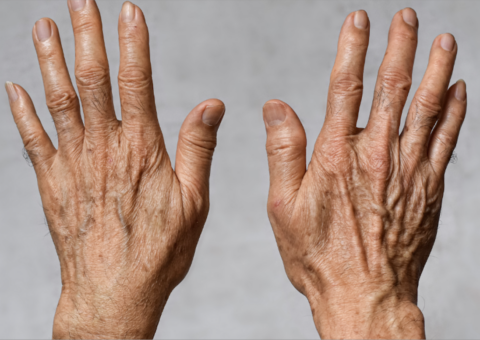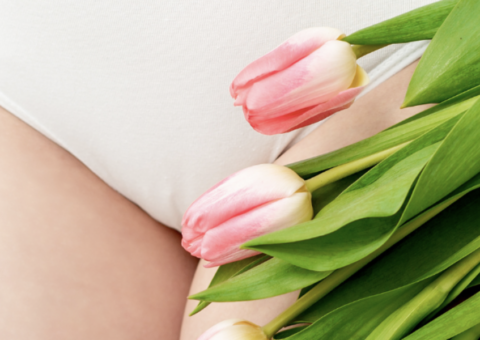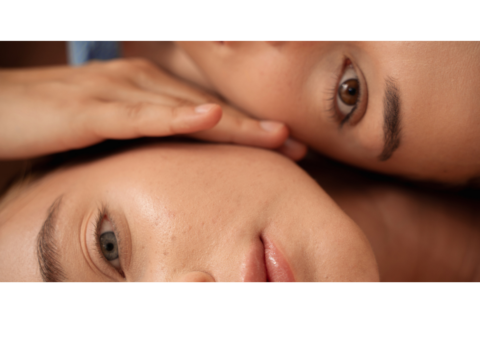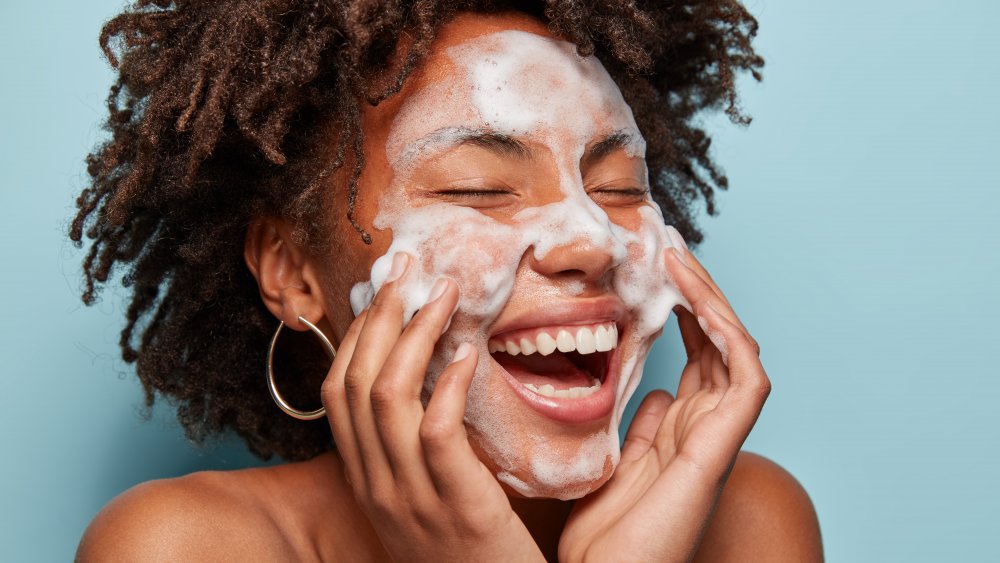
Cleansing is a crucial part of caring for your skin and the first step in your skincare regimen. Arguably one of the most important parts of your routine other than sunscreens; cleansers are so important to get right because using the wrong one can cause issues by disrupting the skin barrier. Harsh surfactants can interact with protein and lipids on the stratum corneum resulting in trans-epidermal water loss, skin irritation and ultimately disruption of the skin barrier.
![]() WHAT DOES A CLEANSER DO?
WHAT DOES A CLEANSER DO?
- Cleans away dirt, dead cells, pollution, sweat, make-up + bacteria
- Removes excess oil
- Cleans pores
- Removes makeup and sunscreen
- Creates a clean base for your skincare

![]() HOW DO CLEANSERS WORK?
HOW DO CLEANSERS WORK?
Surfactants have both a polar head that loves water and a non-polar tail that likes oil which makes it lovely to pick up dirt and get whisked away with a rinse.
Other benefits: – depending on the formulation, they can:

CLEANSER TIP
Striking a good balance based on your skin type, needs, preferences, exposures + habits is KEY.
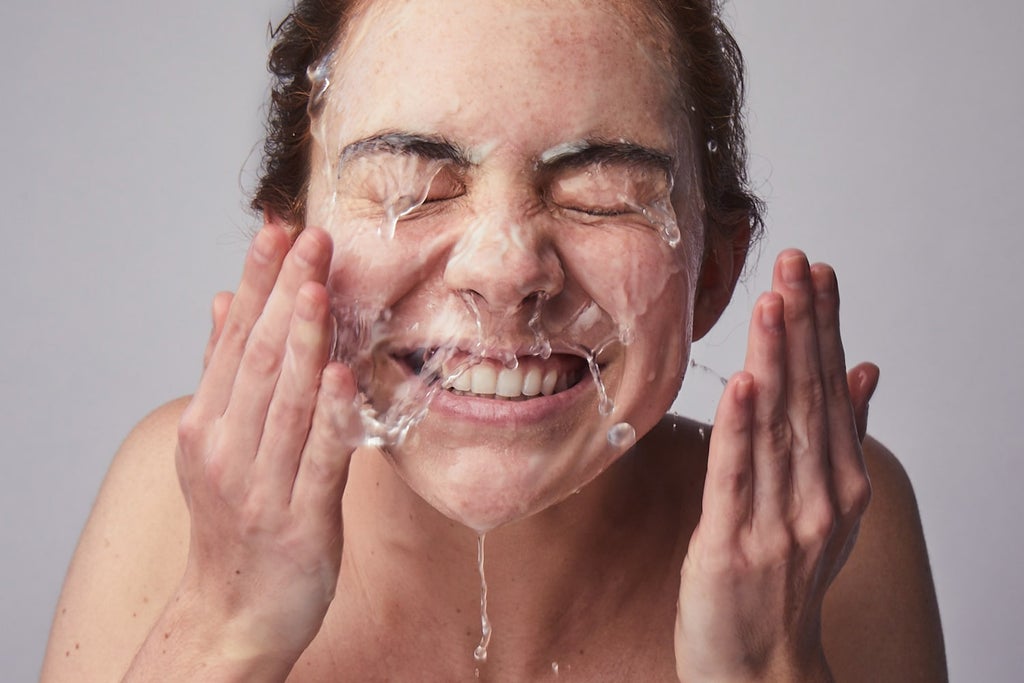
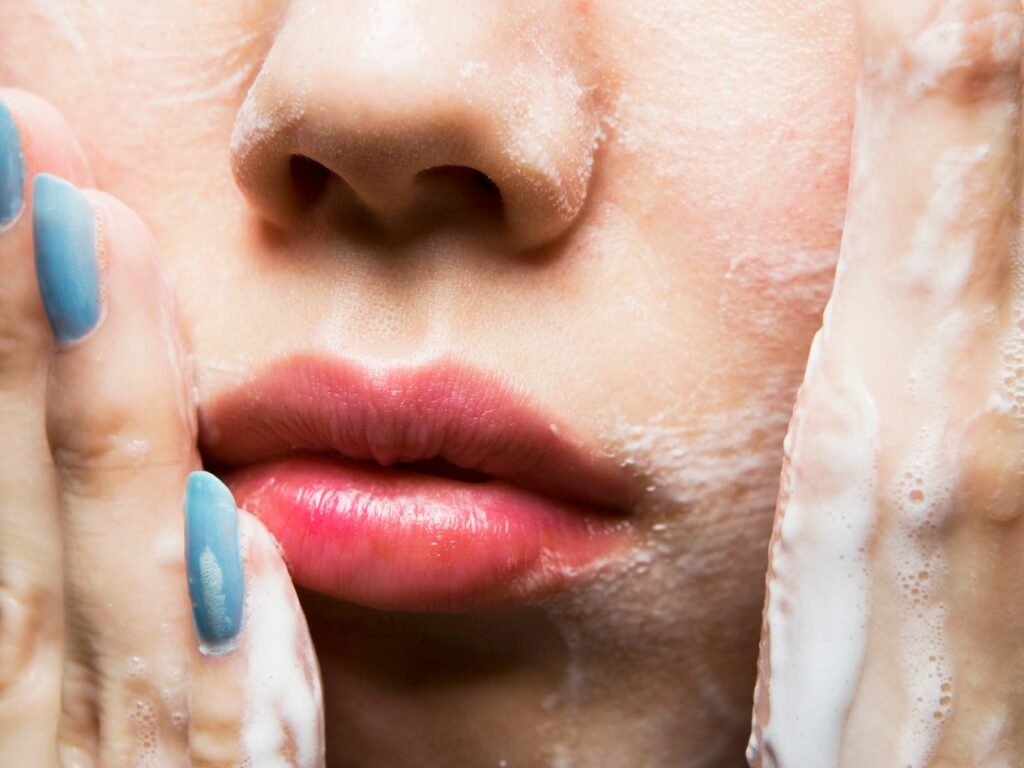
![]() WHAT ARE THE DIFFERENT TYPE OF CLEANSERS?
WHAT ARE THE DIFFERENT TYPE OF CLEANSERS?
Cleansing technology has advanced so far that there is an overwhelming array of options based on your skin type. Add to that conflicting information about cleansing vs using a micellar water or cleansing techniques such as double cleansing and it’s made something so simple very complicated.
![]() LET’S CLEAN UP THE CONFUSION (pun intended 😊)
LET’S CLEAN UP THE CONFUSION (pun intended 😊)
Basic rules: the skin performs optimally at a pH of around 5-6 so cleansers with a high pH can slow its natural skin repairing mechanism. The goal is to cleanse effectively with the least amount of irritation and without leaving that ‘squeaky clean’ feeling. Thankfully nowadays there are plenty of gentle, skin-friendly cleanser options which come in a range of different formulations.
I prefer surfactants which are gentle eg sodium cocoyl isethionate/ cocoamidopropyl betaine/ polyglucose/ lauryl glucose/ sodium lauroyl lactylate/ sodium lauryl sarcosinate
I recommend avoiding surfactants such as SLS, SLES which – while they foam well –disrupt the skin barrier and can be very irritating.
In general: foam cleansers will generally help oily skin while dry or sensitive skin types may find these cleansers too stripping. Of course this won’t be true for every case and is very dependent on formulation.
On the contrary, cream/ milk cleansers contain more fatty alcohols and oils that people with dry and sensitive skin find helpful. People with oily skin may not like the feel of cream cleansers because of the higher oil content.
![]() A BREAKDOWN OF DIFFERENT CLEANSERS
A BREAKDOWN OF DIFFERENT CLEANSERS
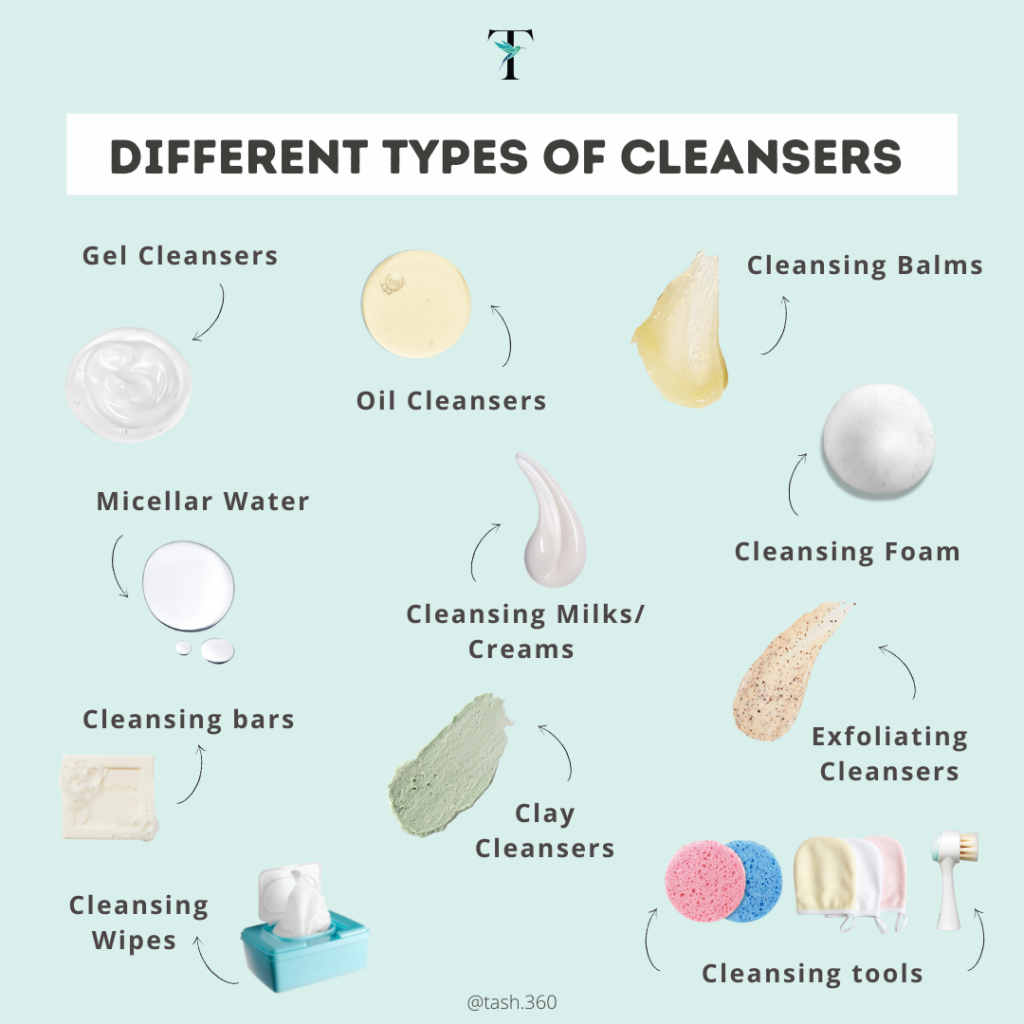
– Water-based / Gel / Foaming Cleansers
These cleansers contain cleansing agents in a water base. They may or may not foam. Remember that foaming ability has nothing to do with irritation potential. Just because a cleanser foams does not mean that it is irritating. Gentle surfactants such as coco-betaine can also foam well. Additionally, many foaming cleansers now contain emollient and moisturizing ingredients to ensure that the skin does not get stripped off of its natural oils and stays well hydrated. Examples include: glycerin, ceramides, cholesterol, cetearyl alcohol, stearyl alcohol, cetyl alcohol. On the flip side, sometimes the foaming effect IS due to harsh surfactants which irritate dry and sensitive skin. Gel cleansers have a clear, jelly-like consistency offering deep cleansing effectively unclogging pores, removing excess oil + dirt from the skin.
– Cleansing Foams
These cleansers are similar to water-based cleansers but come out of the bottle as a foam. Easier to apply.
– Micellar Water
These cleansers are similar to water-based cleansers that have very mild, very diluted cleansing agents. Usually used to remove makeup with a cotton wipe. This formulation acts like a magnet by gently pulling makeup, sebum etc off the skin. Micelles are aggregates of ampophilic compounds – these are substances with both hydrophilic (water loving) and lipophilic (oil-loving) properties. I still recommend that you wash off the residue because the leftover surfactants can irritate the skin. Prolonged contact can impair the skin’s barrier and disrupt its function by removing lipids/ oils + Natural Moisturising Factors or NMFs (surfactants’ lipophilic tails can’t differentiate from oils from your skin and the unwanted substances). It can also leave some oil residue on the skin’s surface especially when removing heavy makeup which may clog your pores or irritate your skin. Micellar water is helpful in double cleansing, in areas with thin skin (lips + eyelids) and is handy during travel.
– Cleansing oils / balms
Cleansing agents in an oil or butter base. It’s a blend of oils with minimal to no surfactants that work by attracting sebum + oil-based substances. Sometimes the oil itself acts as a cleansing agent. They have a petrolatum like consistency at room temp but liquefy upon contact with warmer body temperatures. Effective at removing waterproof makeup + sunscreen. Commonly used oils: mineral oil, castor oil, jojoba oil + olive oil. May leave a residue on the skin. Supposed to be wiped off with a cloth or washed with water afterwards. Less ideal for oily skin. Cleansing balms are effective at removing waterproof makeup and sunscreen since they ‘stick’ to oil and make-up making it easy to wash off. Rub the oil/ balm on your hands and gently massage on to a DRY face then gently rinse with warm water to emulsify and follow up with a water-based cleanser. The con: dipping fingers into a tub can be a recipe for breeding of bugs.
– Cleansing milks / creams
These cleansers often contain hydrating ingredients such as occlusives, humectants and ceramides to support the skin barrier while it cleanses to minimize skin barrier disruption. Suitable for dry skin. Cleansing milks are the lighter version of cleansing creams and can be applied to the skin with a cotton pad. The con is that they often do not remove heavy make-up.
– Cleansing bars, eg glycerin or aqueous cream based
Typically a gentle pH friendly option but inconvenient to store. They are more eco-friendly.
– Powder
A little messy but exfoliates gently. These turn creamy or foamy when in contact with water and are able to thoroughly able to cleanse and gently exfoliate. They often contain very little to no preservatives making it suitable for oily or sensitive skin.
– Clay cleanser
These cleansers are mattifying, they draw out excess oil, remove dirt + impurities + may have detoxifying benefits. Good for oily + acne prone skin.
– Exfoliating Cleansers
They can contain chemical exfoliants eg AHAs/ BHAs/ PHAs (glycolic, lactic or salicylic acid) or physical exfoliants such as walnut shells, apricot seeds, rice and cellulose beads.
– Cleansing Wipes
Convenient but not the best at thoroughly removing all the dirt, make-up + excess oil. Be careful not to tug at the skin when wiping and look for variants that are soft on the skin. Often leave irritants on the skin. NOT RECOMMENDED.
– Cleansing tools, mitts + sponges
Made from different fibres + can be used without facial cleansers to remove dirt + impurities while also sloughing off dead skin cells. Be gentle as they can be abrasive.
Now let’s tackle which type of cleanser suits which skin type and let’s get stuck into some dermatologist-approved recommendations:
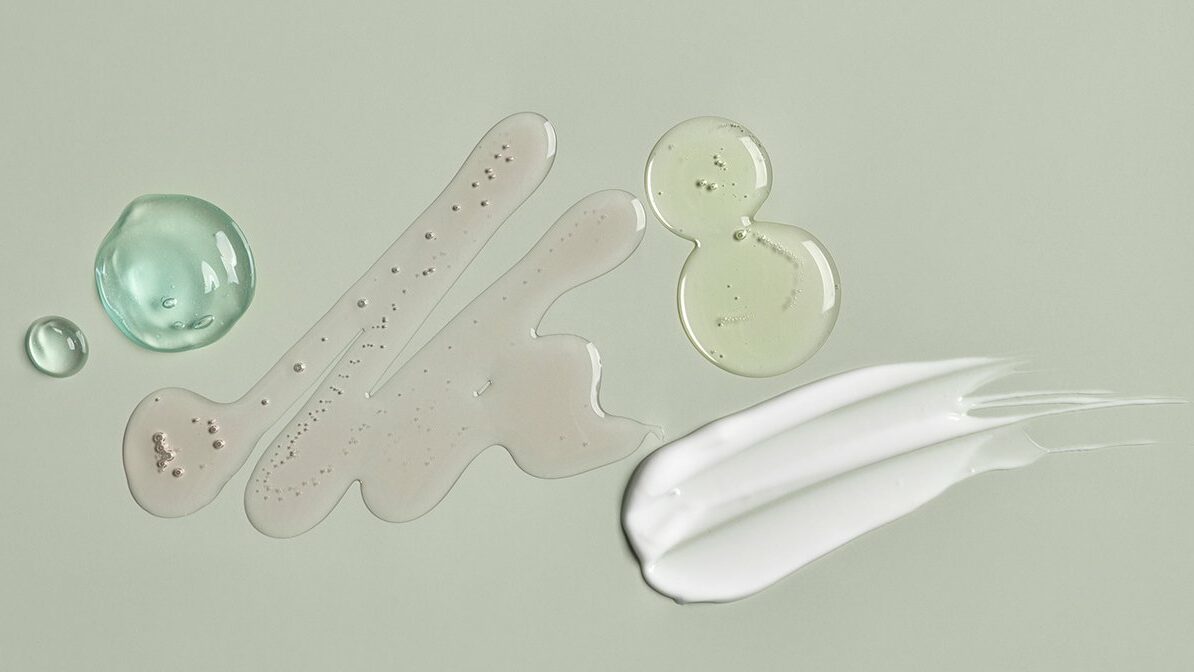
![]() NORMAL SKIN:
NORMAL SKIN:
Lucky you! Use what you like but avoid cleansers which will inadvertently strip your skin barrier + sensitize your skin. Don’t mess with a good thing! Make sure it effectively removes makeup, dead skin cells + sebum. Choose one that doesn’t leave a feeling of greasiness or stickiness on the face post-cleansing.
Points to remember: Your skin should NOT feel dry, itchy, burn or sting after cleansing. If it does: you are over-cleansing or using cleanser with surfactants which are too harsh. Look for cleansers with additional benefits: hydrating, exfoliating, containing prebiotics.

![]() SENSITIVE SKIN:
SENSITIVE SKIN:
Go for a product with minimal ingredients. Look for a product specifically formulated for sensitive skin and look for products with the shortest ingredient listing. Avoid products with fragrance or alcohols. Avoid cleansing bars and soaps: they are too harsh and will disrupt the skin acid mantle leaving it dry and irritated. You can also look for products with soothing or anti-inflammatory ingredients as well as pre or probiotics to help your skin calm down and support the skin barrier. Ingredients such as aloe vera, argan oil, bisabolol, chamomile, cucumber, green tea, niacinamide and zinc help soothe skin inflammation.

![]() OILY SKIN
OILY SKIN
In general: water-based, gel/ foam cleansers will generally help oily skin because they have a higher amount of surfactants. Oilier skin types may not like the feel of cream cleansers because of their higher oil and fatty alcohol content. Of course, this won’t be true for every case.

![]() ACNE PRONE SKIN
ACNE PRONE SKIN
Just because you have acne-prone skin, it doesn’t mean that you need to buy an acne-specific cleanser as part of your treatment. But if you’re focusing on cleansers geared towards treating acne: look for ‘oil control’ on the label: look for products specially formulated with ingredients like niacinamide or zinc to actively remove and control excess sebum or alpha-hydroxy acids like salicylic acid or glycolic acid to gently resurface and dislodge build-up in pores. A caveat: if you are using prescription acne topicals, you would be better off sticking to gentle cleansers.
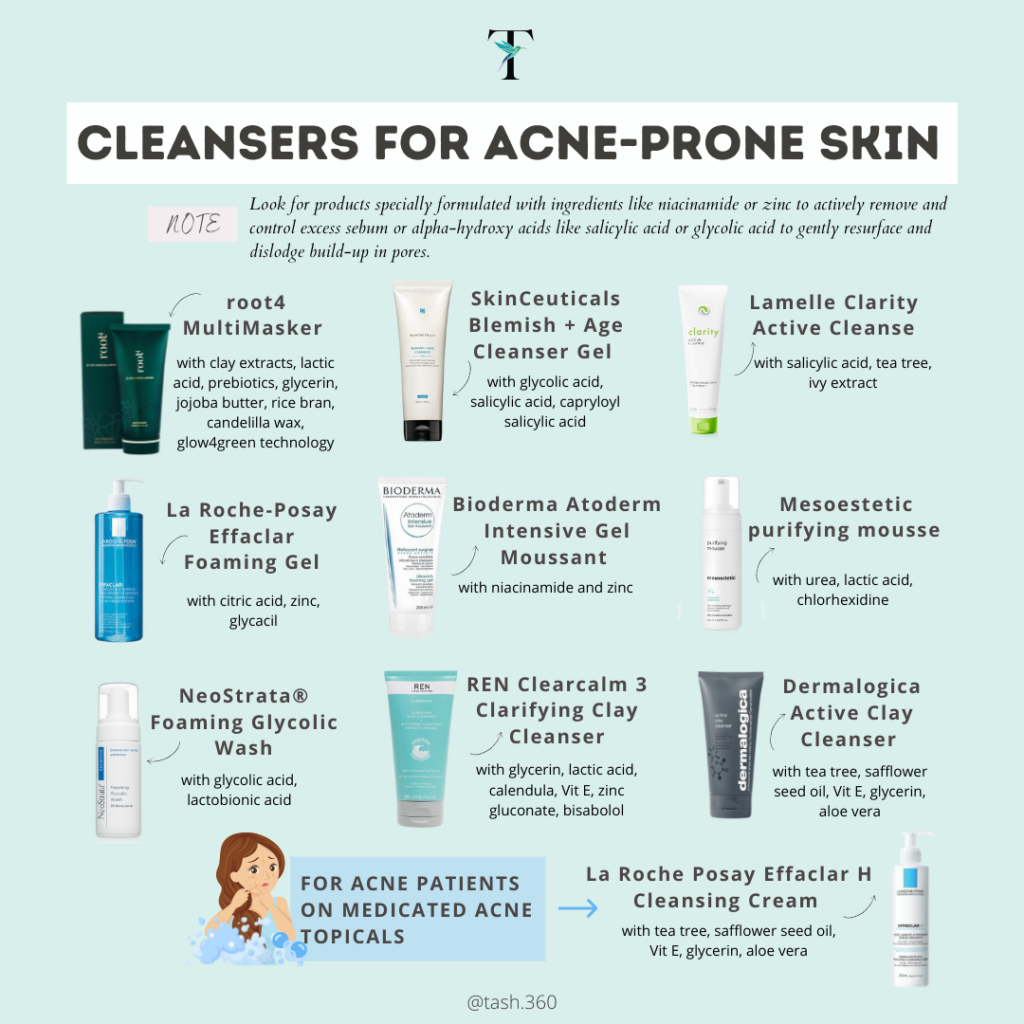
![]() DRY, MORE MATURE SKIN
DRY, MORE MATURE SKIN
If you have dry skin, you will benefit from moisturizing ingredients in your cleanser like ceramides, stearyl alcohols, plant oils like argan oil, squalene, glycerin, sorbitol, urea, butylene glycol, amino acids, pentylene glycol and others. Avoid drying ingredients such as benzoic acids, SD alcohol, denatured alcohol, ethanol and isopropyl alcohol.

Consider yourselves schooled on the topic of cleansers and the next time you wash your face – make sure that you are hitting pay dirt!





